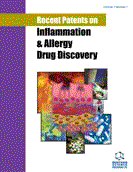Abstract
Corneal neovascularization (NV) is a significant complication of numerous infectious and non-infectious ocular surface disorders. Presence of newly formed blood vessels in the cornea can compromise clarity and therefore vision. Various growth factors and proteinases seem to be involved in the corneal NV. During corneal injury, angiogenic factors are released from corneal epithelial and stromal cells as well as infiltrating immune cells like macrophages. In fact, the balance between angiogenic and anti-angiogenic factors is shifted towards angiogenic molecules in the corneal NV. Numerous investigations support this idea that vascular endothelial growth factor (VEGF) plays a pivotal role in corneal NV by inducing endothelial cells proliferation, migration, and tubulogenesis. There is a growing body of evidence that corneal NV can be reduced by using anti-VEGF agents. This article reviews the most known molecular events in corneal NV and also some of the recent patents relevant to the field. Understanding the role of growth factors, proteinases and inflammatory cytokines in corneal NV can help the investigators to design therapeutic options for controlling this debilitating condition.
Keywords: Cornea, neovascularization, VEGF, MMP, inflammation
 14
14


















